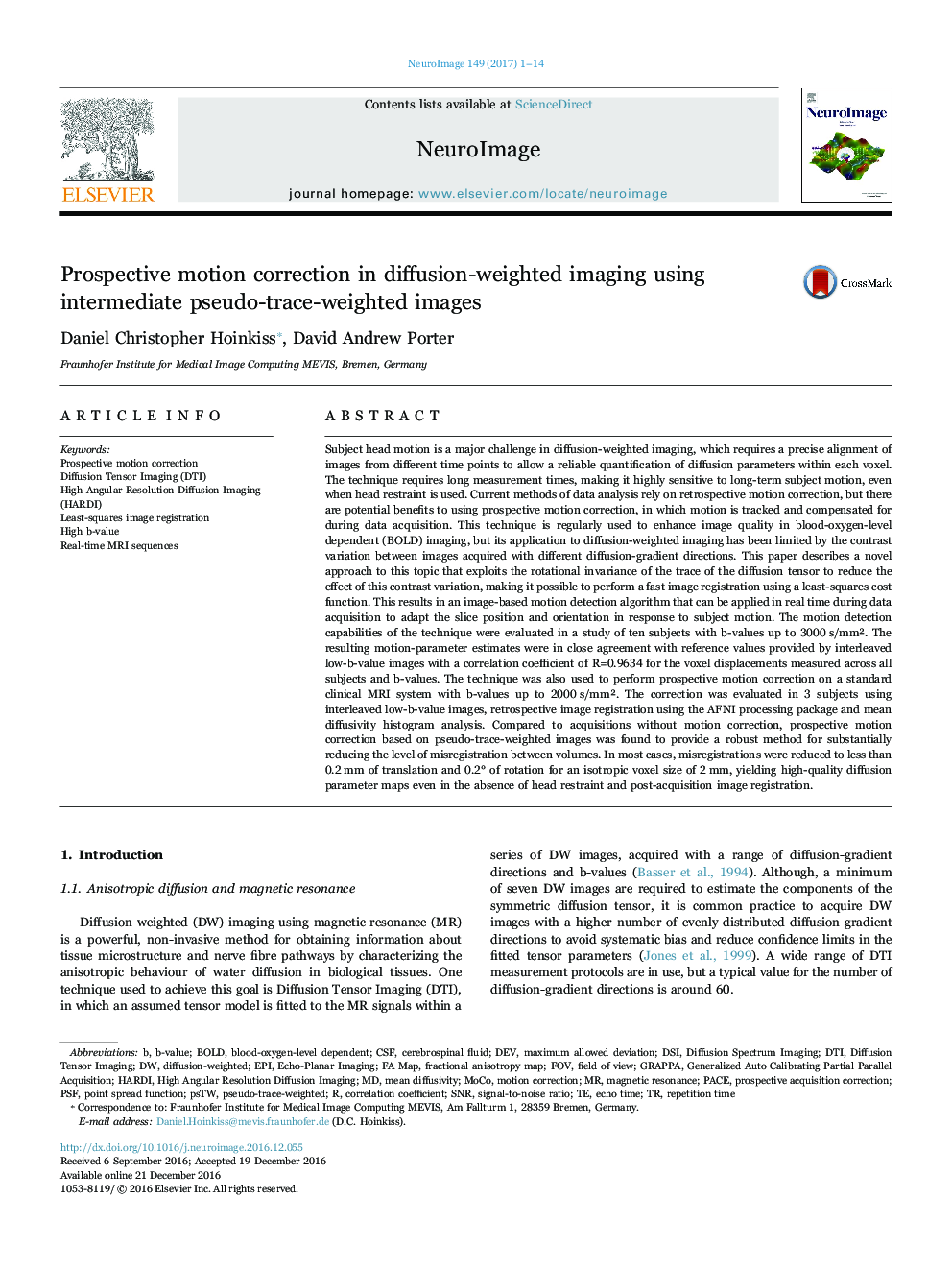| کد مقاله | کد نشریه | سال انتشار | مقاله انگلیسی | نسخه تمام متن |
|---|---|---|---|---|
| 5631229 | 1580861 | 2017 | 14 صفحه PDF | دانلود رایگان |
- Novel approach to prospective motion correction in diffusion-weighted imaging.
- Pseudo-trace-weighted images used to reduce contrast variation during image registration.
- Only requires modified order of diffusion-gradient vectors without additional scan time.
- Residual motion in most cases within ±0.2 mm for translations and ±0.2° for rotations.
- Applicable at high b-value and to all diffusion-weighted studies with multiple diffusion-gradient directions.
Subject head motion is a major challenge in diffusion-weighted imaging, which requires a precise alignment of images from different time points to allow a reliable quantification of diffusion parameters within each voxel. The technique requires long measurement times, making it highly sensitive to long-term subject motion, even when head restraint is used. Current methods of data analysis rely on retrospective motion correction, but there are potential benefits to using prospective motion correction, in which motion is tracked and compensated for during data acquisition. This technique is regularly used to enhance image quality in blood-oxygen-level dependent (BOLD) imaging, but its application to diffusion-weighted imaging has been limited by the contrast variation between images acquired with different diffusion-gradient directions. This paper describes a novel approach to this topic that exploits the rotational invariance of the trace of the diffusion tensor to reduce the effect of this contrast variation, making it possible to perform a fast image registration using a least-squares cost function. This results in an image-based motion detection algorithm that can be applied in real time during data acquisition to adapt the slice position and orientation in response to subject motion. The motion detection capabilities of the technique were evaluated in a study of ten subjects with b-values up to 3000 s/mm². The resulting motion-parameter estimates were in close agreement with reference values provided by interleaved low-b-value images with a correlation coefficient of R=0.9634 for the voxel displacements measured across all subjects and b-values. The technique was also used to perform prospective motion correction on a standard clinical MRI system with b-values up to 2000 s/mm². The correction was evaluated in 3 subjects using interleaved low-b-value images, retrospective image registration using the AFNI processing package and mean diffusivity histogram analysis. Compared to acquisitions without motion correction, prospective motion correction based on pseudo-trace-weighted images was found to provide a robust method for substantially reducing the level of misregistration between volumes. In most cases, misregistrations were reduced to less than 0.2 mm of translation and 0.2° of rotation for an isotropic voxel size of 2 mm, yielding high-quality diffusion parameter maps even in the absence of head restraint and post-acquisition image registration.
Journal: NeuroImage - Volume 149, 1 April 2017, Pages 1-14
